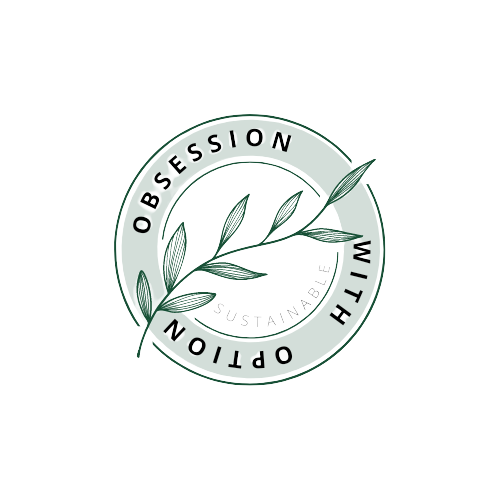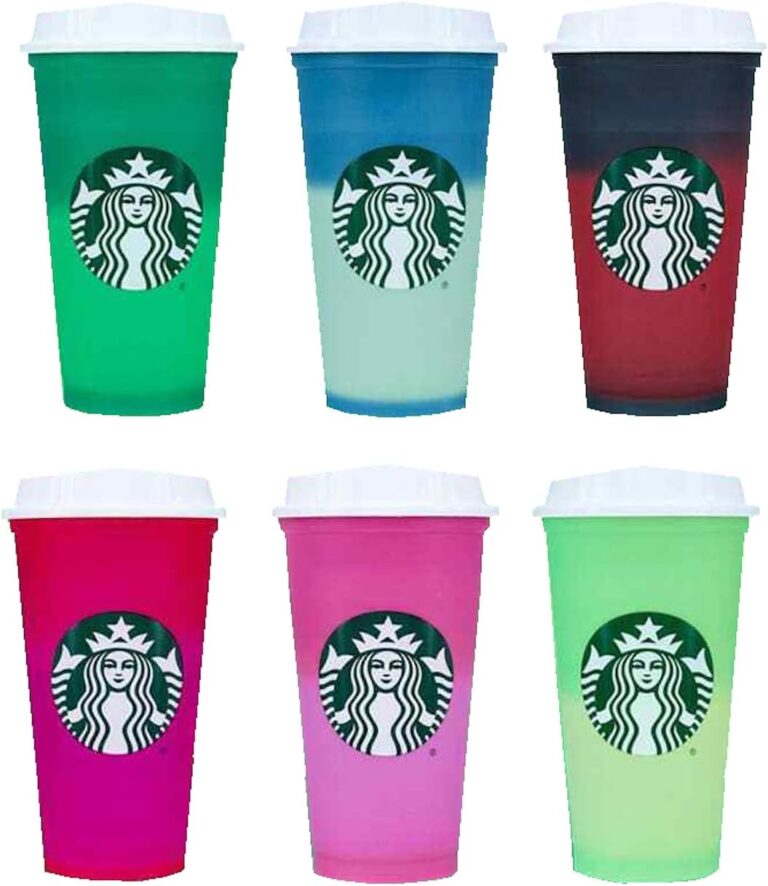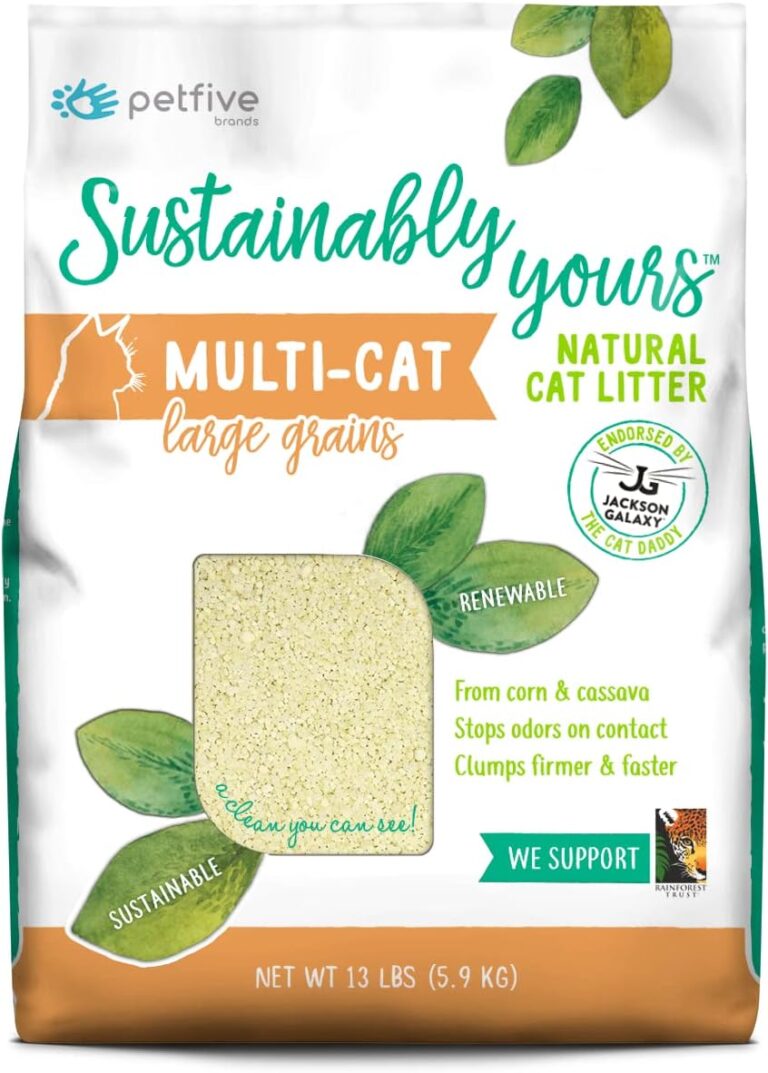In this article, you will explore the sustainability, ethics, and fast fashion practices of Faherty. As a conscious consumer, it is important for you to understand the impact of the brands you support, and Faherty aims to provide transparency while balancing style and responsibility. By delving into their sustainability efforts, ethical sourcing, and approach to fast fashion, you will gain valuable insights to make informed decisions about your fashion choices. So, let’s dive into the world of Faherty and uncover the practices behind their stylish creations.

1. Overview
1.1 Introduction to Faherty brand
Welcome to the world of Faherty, a brand that not only offers stylish and high-quality clothing but also strives to make a positive impact on the fashion industry. Established by twin brothers Mike and Alex Faherty, the brand brings together their shared passion for sustainable and ethical practices. With a focus on creating clothing that lasts and embracing transparency in their supply chain, Faherty sets itself apart in the fashion world.
1.2 Importance of sustainability and ethics in the fashion industry
In recent years, sustainability and ethics have become increasingly important in the fashion industry. As consumers become more conscious of the environmental and social impact of their clothing choices, brands like Faherty have risen to the challenge. Sustainability involves minimizing harm to the environment through eco-friendly materials and processes, while ethics ensure fair treatment of workers and the inclusion of diverse perspectives. By prioritizing sustainability and ethics, Faherty aims to change the narrative around fashion and inspire other brands to follow suit.
2. Sustainability Practices
2.1 Use of eco-friendly materials
One of Faherty’s key sustainability practices is the use of eco-friendly materials in their clothing. By utilizing organic cotton, hemp, and recycled materials, Faherty reduces the environmental impact associated with traditional fabric production. Organic cotton, for example, is grown without harmful pesticides and is biodegradable, making it a more sustainable choice. The brand’s commitment to using eco-friendly materials extends beyond their clothing line, as they also incorporate sustainable materials into packaging and other accessories.
2.2 Sustainable production processes
Faherty implements sustainable production processes to minimize its environmental footprint. From reducing water and energy usage to implementing dyeing techniques that limit chemical waste, Faherty takes a holistic approach to sustainability. By continuously exploring innovative technologies and partnering with eco-conscious factories, the brand ensures that the production of their clothing aligns with their commitment to sustainability.
2.3 Renewable energy sources
To further support sustainability efforts, Faherty prioritizes the use of renewable energy sources in their operations. By investing in solar and wind energy, the brand decreases its reliance on fossil fuels and decreases its carbon emissions. This commitment to renewable energy showcases Faherty’s dedication to reducing its environmental impact and embracing alternative energy solutions.
2.4 Waste reduction and recycling efforts
Faherty actively works to minimize waste throughout its production processes. By implementing strategies such as fabric and trim recycling, the brand reduces the amount of material that goes to waste. Additionally, Faherty encourages customers to recycle their clothing through garment recycling programs, ensuring that their products have a circular lifecycle and do not end up in landfills.
2.5 Supply chain transparency
Supply chain transparency is a key aspect of Faherty’s sustainability practices. The brand believes in taking responsibility for every stage of the production process and actively shares information about their suppliers and manufacturing processes. By providing this transparency, Faherty allows customers to make informed choices and encourages other brands to follow suit. This commitment to transparency helps build trust and establishes Faherty as a leader in sustainable fashion.
3. Ethical Standards
3.1 Fair labor practices
Faherty upholds fair labor practices throughout its supply chain, ensuring that workers are treated ethically and have safe working conditions. The brand partners with manufacturers who adhere to fair labor standards, which include fair wages, reasonable working hours, and the absence of exploitative practices. By prioritizing fair labor practices, Faherty supports the well-being of workers and promotes a more equitable fashion industry.
3.2 Employee well-being and safety
Employee well-being and safety are key considerations for Faherty. The brand goes beyond basic legal requirements to ensure that its workers are cared for and have a positive work environment. This includes providing health and safety training, promoting work-life balance, and offering support programs to address any issues that may arise. Faherty understands that happy and healthy employees are the foundation of a successful and ethical brand.
3.3 Fair wages and working hours
Faherty is committed to providing fair wages and working hours to all its employees. The brand believes that everyone involved in the production process deserves to be compensated fairly for their work. By ensuring fair wages and working hours, Faherty supports the livelihoods of its employees, contributing to a more sustainable and ethical fashion industry.
3.4 No child or forced labor
As part of their ethical standards, Faherty strictly prohibits any form of child or forced labor. The brand believes that every child deserves the opportunity to receive an education and grow in a safe environment. Faherty’s commitment to eliminating child and forced labor reinforces its dedication to ethical practices and creating a more responsible fashion industry.
3.5 Unbiased and inclusive work environment
Faherty values diversity and inclusion in its workplace, fostering an environment where all employees are treated with respect and given equal opportunities. By embracing different perspectives and experiences, Faherty cultivates a culture of creativity and innovation. The brand actively promotes a work environment that values everyone’s contributions and strives to be an industry leader in creating inclusivity.
4. Fast Fashion Impact
4.1 Definition and characteristics of fast fashion
Fast fashion is a term used to describe the rapid production and consumption of low-cost, trendy clothing. It is characterized by short production cycles, cheap materials, and a disposable mindset. Fast fashion brands often prioritize quick turnover and low prices over sustainability and ethical standards.
4.2 Negative environmental impact
Fast fashion has a significant negative environmental impact. The constant demand for new clothing leads to increased resource consumption, including water, energy, and raw materials. Fast fashion also contributes to pollution through the release of harmful chemicals during fabric production and textile waste that ends up in landfills.
4.3 Exploitation of labor
One of the main criticisms of the fast fashion industry is its exploitation of labor. Many fast fashion brands outsource production to countries with lax labor regulations, leading to low wages, unsafe working conditions, and long working hours. This unethical treatment of workers is a pressing concern that Faherty aims to address through its fair labor practices and supply chain transparency.
4.4 High consumer turnover and waste
Due to its disposable nature, fast fashion encourages consumers to constantly purchase new clothing, resulting in high turnover rates and excessive waste. Inexpensive garments often lack durability, leading to items being discarded after only a few uses. This cycle of high consumption and disposal contributes to the growing issue of textile waste, putting a strain on the environment.
4.5 Comparison of Faherty’s practices with the fast fashion industry
Faherty’s practices stand in stark contrast to those of the fast fashion industry. While fast fashion focuses on quick turnover and low prices, Faherty prioritizes sustainability, ethics, and longevity. By utilizing eco-friendly materials, embracing transparency, and upholding fair labor practices, Faherty offers consumers an alternative to the harmful practices associated with fast fashion. The brand encourages consumers to make mindful choices and invest in high-quality clothing that will last, ultimately reducing their environmental impact.

5. Sustainability in Faherty’s Products
5.1 Use of organic and recycled materials
Faherty places great importance on the use of organic and recycled materials in its products. Organic cotton, for example, is grown without the use of harmful pesticides or synthetic fertilizers, reducing the ecological impact of the fabric production process. Additionally, Faherty incorporates recycled materials, such as recycled polyester, into its clothing, giving new life to existing resources and diverting them from landfills.
5.2 Focus on longevity and durability
Unlike fast fashion brands that prioritize short-term trends and disposable garments, Faherty designs its products with longevity and durability in mind. By focusing on high-quality materials and craftsmanship, Faherty creates clothing that withstands the test of time. This approach not only reduces waste but also encourages consumers to invest in timeless pieces that can be worn and cherished for years to come.
5.3 Repurposing and upcycling initiatives
Faherty actively promotes repurposing and upcycling initiatives to extend the lifecycle of its products. Through repairing, altering, or repurposing garments, customers can transform well-loved Faherty pieces and give them new life. By encouraging these practices, Faherty empowers consumers to reduce waste and embrace a more sustainable fashion approach.
5.4 Approach to eco-friendly packaging
Packaging is another area where Faherty incorporates sustainable practices. The brand utilizes eco-friendly packaging materials, such as recycled paper and biodegradable polybags, to minimize its environmental impact. Faherty also promotes the recycling of packaging, encouraging customers to dispose of it responsibly and further reduce waste.
5.5 Incorporation of sustainable practices in product design and innovation
Sustainability is deeply ingrained in Faherty’s product design and innovation process. The brand constantly explores new ways to minimize its environmental footprint through innovative design techniques and material choices. By prioritizing sustainability in product development, Faherty ensures that its entire range of clothing embodies the brand’s commitment to ethical and environmentally conscious practices.
6. Ethical Sourcing and Production
6.1 Ethical sourcing of raw materials
Faherty places great importance on the ethical sourcing of its raw materials. The brand works closely with suppliers who share its commitment to sustainability and ethics, ensuring that materials are sourced responsibly. This involves selecting suppliers who adhere to environmental regulations and support fair labor practices.
6.2 Collaboration with suppliers committed to ethical standards
Collaboration is key to Faherty’s ethical sourcing and production practices. The brand actively engages with its suppliers, fostering strong relationships based on shared values. By working closely with suppliers, Faherty ensures that its materials are sourced ethically and that the entire supply chain is aligned with the brand’s commitment to sustainability and ethics.
6.3 Monitoring and auditing practices
To maintain ethical standards throughout its supply chain, Faherty employs rigorous monitoring and auditing practices. The brand conducts regular inspections to evaluate the working conditions and labor practices of its suppliers. Transparent and open communication with suppliers is also key to identifying areas for improvement and fostering a culture of continuous ethical improvement.
6.4 Worker empowerment and support programs
Faherty believes in empowering workers and fostering a positive work environment. The brand supports various worker empowerment initiatives, such as providing training and skill development opportunities. Faherty also collaborates with its suppliers to implement support programs that prioritize worker well-being and provide a forum for addressing any concerns or grievances.
6.5 Impactful partnerships and certifications
Faherty actively seeks out partnerships and certifications that further support its ethical sourcing and production practices. By collaborating with organizations dedicated to sustainable and ethical fashion, Faherty strengthens its commitment to responsible practices. Certifications, such as Fair Trade or Global Organic Textile Standard (GOTS), provide customers with additional assurance that Faherty’s products meet strict sustainability and ethical standards.

7. Supply Chain Transparency
7.1 Traceability of materials and production
Faherty maintains traceability throughout its supply chain, ensuring that the journey of its products can be traced from raw materials to finished garments. By utilizing technologies and systems that enable transparency, Faherty builds trust with customers who can be confident in the sustainable and ethical practices used to create their clothing.
7.2 Sharing information about suppliers and manufacturing processes
Transparency is a core value for Faherty, and the brand proactively shares information about its suppliers and manufacturing processes. This includes details about the factories they work with, the materials used, and the certification programs in place. Faherty’s commitment to openness allows customers to make informed decisions and supports a more sustainable and ethical fashion industry as a whole.
7.3 Third-party certifications and audits
To further enhance transparency and accountability, Faherty engages in third-party certifications and audits. These independent assessments verify that the brand’s sustainability and ethical claims are accurate and consistent. By obtaining certifications from reputable organizations, Faherty provides customers with additional assurance that its practices meet established standards.
7.4 Engagement with stakeholders and customers
Faherty actively engages with stakeholders and customers to foster open dialogue and demonstrate its commitment to transparency. The brand welcomes feedback, questions, and concerns, using this information to continuously improve its practices and make transparent decisions. By involving stakeholders and customers in the conversation, Faherty ensures that it remains accountable to its sustainability and ethical goals.
7.5 Continuous improvement initiatives
Faherty understands that sustainability and ethics are ongoing journeys. As part of its commitment to improvement, Faherty consistently seeks ways to refine its practices and embrace new technologies. By staying up to date with industry advancements and customer expectations, Faherty maintains its position as a leader in transparency and strives to exceed sustainability and ethical standards.
8. Social and Environmental Initiatives
8.1 Community and philanthropic efforts
Faherty actively engages in community and philanthropic efforts to give back and create a positive impact outside of its own operations. The brand supports various initiatives focused on education, environmental conservation, and social equality. By investing in these initiatives, Faherty demonstrates its commitment to being a responsible and socially conscious member of the communities it operates in.
8.2 Environmental conservation projects
Environmental conservation is a key focus for Faherty. The brand actively supports projects and organizations dedicated to protecting and preserving natural resources. This support can take the form of financial contributions, partnerships, or direct involvement in activities such as beach cleanups and habitat restoration.
8.3 Awareness campaigns and education
Faherty believes in the power of education and awareness to drive positive change. The brand actively engages in awareness campaigns to educate consumers about sustainability, ethics, and the harmful effects of fast fashion. Through social media, collaborations, and partnerships, Faherty reaches a wide audience, inspiring them to make conscious choices and consider the impact of their clothing purchases.
8.4 Extended producer responsibility
Faherty takes on the responsibility of reducing waste and minimizing the environmental impact of its products even after they are sold. The brand actively encourages customers to recycle their Faherty clothing through garment recycling programs. By taking responsibility for the entire lifecycle of its products, Faherty showcases its commitment to sustainability beyond just the manufacturing process.
8.5 Social and environmental impact assessment
As part of its commitment to transparency and accountability, Faherty conducts social and environmental impact assessments. These assessments help identify areas where the brand can further improve its practices and make a positive difference. By regularly evaluating its impact, Faherty ensures that it remains true to its sustainability and ethical goals.
9. Customer Engagement
9.1 Communication of sustainability and ethical practices
Customer engagement is a priority for Faherty, and the brand actively communicates its sustainability and ethical practices. This includes sharing information through product labels, website content, and social media platforms. Faherty believes in being transparent and accessible, allowing customers to make informed choices and align their values with their purchases.
9.2 Consumer education and awareness initiatives
Beyond communication, Faherty engages in consumer education and awareness initiatives. The brand regularly provides resources and information on topics such as sustainable fashion, responsible consumption, and the impact of clothing choices. By empowering customers with knowledge, Faherty encourages them to actively participate in creating a more sustainable and ethical fashion industry.
9.3 Feedback mechanisms and responsiveness
Faherty values customer feedback and actively seeks input on its sustainability and ethical practices. The brand provides various channels for customers to share their thoughts, concerns, and suggestions. Faherty’s commitment to responsiveness enables the brand to address customer needs and continuously improve its sustainability and ethical efforts.
9.4 Loyalty programs and incentivizing sustainable choices
Faherty rewards customers who prioritize sustainability and ethical practices through loyalty programs and incentivizing initiatives. This can include exclusive discounts for returning customers who recycle their clothing, or special rewards for those who engage in Faherty’s educational initiatives or take part in environmental conservation activities. By incentivizing sustainable choices, Faherty encourages customers to actively participate in creating a more responsible fashion industry.
9.5 Collaborative approach with customers
Faherty believes in a collaborative approach with its customers. The brand actively seeks input and feedback from its community, incorporating customer perspectives into its decision-making processes. By working together, Faherty and its customers create a collective force for positive change within the fashion industry. This collaborative mindset sets Faherty apart and fosters a sense of ownership and shared responsibility among its customer base.
10. Challenges and Future Outlook
10.1 Current challenges faced by Faherty
As with any brand committed to sustainability and ethics, Faherty faces challenges on its journey. One challenge is the cost associated with sustainable and ethical practices. Using eco-friendly materials and adhering to fair labor standards can lead to higher production costs, impacting the final price of the products. Overcoming this challenge requires education and awareness among consumers, who need to understand the value and importance of supporting sustainable and ethical brands.
10.2 Future plans and goals for sustainability and ethics
Faherty has ambitious plans for the future, aiming to further enhance its sustainability and ethical practices. The brand plans to continue exploring innovative materials and production techniques that have a lower environmental impact. Faherty also aims to strengthen its partnerships and collaborations with organizations dedicated to sustainability and ethics, leveraging these connections to drive positive change within the fashion industry.
10.3 Innovations and industry collaborations
Faherty recognizes the power of innovation and collaboration in driving sustainability and ethics forward. The brand actively seeks partnerships with other industry players, sharing knowledge and resources to accelerate positive change. Additionally, Faherty invests in research and development to discover new ways to make its products and processes even more sustainable.
10.4 Consumer demand and market trends
Consumer demand and market trends play a significant role in shaping the future of the fashion industry. Faherty believes that as more consumers become aware of the environmental and social impact of their clothing choices, the demand for sustainable and ethical brands will continue to grow. Faherty aims to meet this demand by offering high-quality, stylish clothing with a strong sustainability and ethics focus.
10.5 The potential for influencing the fast fashion industry
As Faherty continues to lead by example and make sustainability and ethics a priority, the brand has the potential to influence the fast fashion industry. By showcasing the success and positive impact of their practices, Faherty encourages other brands to adopt similar strategies. Through collaboration, education, and increased consumer demand for sustainable and ethical options, the fashion industry as a whole can move towards a more responsible and conscious future.
In conclusion, Faherty is not just another clothing brand. It stands out in the industry by prioritizing sustainability, ethics, and longevity. Through their use of eco-friendly materials, sustainable production processes, and commitment to fair labor practices, Faherty exemplifies what it means to be a responsible brand. With a transparent supply chain, engagement with stakeholders and customers, and continuous improvement initiatives, Faherty sets a high bar for the fashion industry. By embracing sustainable practices, engaging in social and environmental initiatives, and educating consumers, Faherty strives to create a positive impact that extends beyond their clothing line. As the fashion industry moves towards a more sustainable and ethical future, Faherty serves as an inspiration and catalyst for change.












